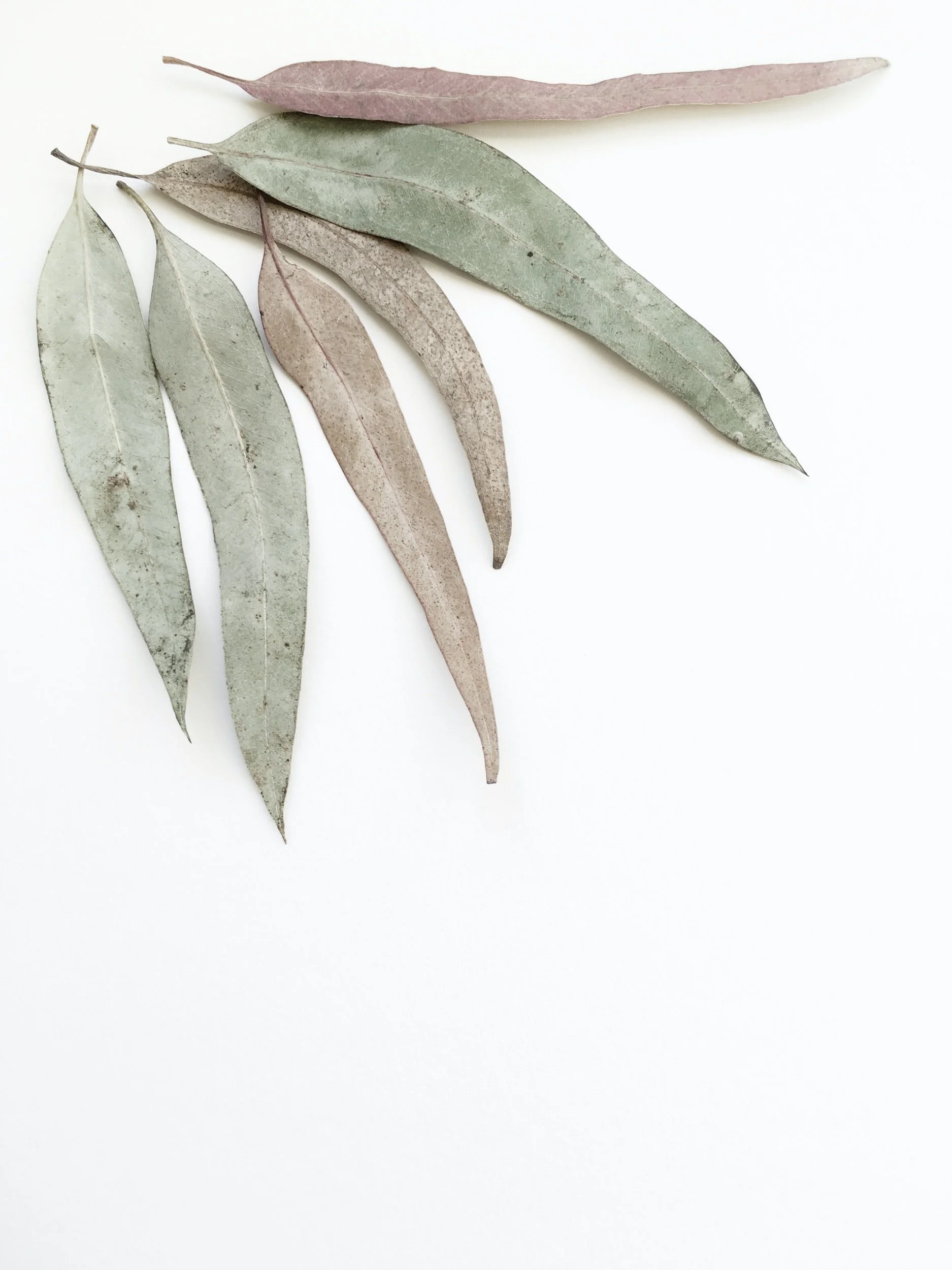Dyeing with Eucalyptus
“Creativity is a gift. It doesn’t come through if the air is cluttered”
There are over 400 species of Eucalyptus, which are part of the myrtle family. Each species will produce a different colour, so it is important to get to know your source well. Eucalyptus make for great windfall gathering
Eucalyptus has gained popularity within the dye world due to India Flint and her amazing work around eco-printing with eucalyptus. Another great resource for the colours to be created from the trees is Sally Blake.
Eucalyptus contains natural tannins (gallic acid and ellagic acid) and polyphenols. The major colouring component of bark is the flavonoid, quercetin and has also been used as a food dye. Eucalyptus leaves contain up to 11% of the major components of tannin with flavonoids (quercetin, rutin).
The rich tannin content of this tree is another perfect dye for beginners because a mordant isn’t required due to tannins working similar to a mordant. However, if you wish to extend the life of the colour or obtain a wider range of dye colours it is still best to mordant your fibre.
Eucalyptus dye Recipe:
Eucalyptus leaves, stems or bark - 100% WOF (weight of fibre) for deep shades.
Finely chop or cut your leaves, for better extraction of colour.
Place the cut leaves into a dye pot and carefully pour boiling water over the leaves and leave to steep.
Next, add enough water into your dye pot for your fibres to move freely.
Bring the dye bath to a simmer and hold for 1-2hrs. Let the dye bath cool overnight.
Strain out the Eucalyptus and add it to your compost.
Add your pre-mordanted, wet fibre to your dye bath and slowly bring the bath back up to a simmer.
Stir the fibre frequently to ensure an even dye on your fibre.
When you are happy with the colour remove the fibre from the dye and gently wring out the excess liquid.
Rinse your fibre in lukewarm water and pH-neutral soap and hang to dry away from direct sunlight.
Other Applications
Eucalyptus leaves are excellent for bundle dyeing/eco printing. The leaves create beautiful prints, try experimenting with different species and patterns. Fresh leaves work best for this method.
Dye Garden
Most Eucalyptus species are endemic to Australia (and closely adjacent islands), although several species originate in Papua New Guinea and Indonesia. Many species have been introduced into New Zealand, with the first trees being established by the early settlers in the mid-nineteenth century.
Research which species will grow well in your area and climate, as some are better suited to some regions than others. Trees are easily available with many species fast growing.
Autumn-winter planting is recommended to maximise root development prior to spring-summer growth.
Use the leaves fresh or dry by hanging the bunch upside down by the string in a cool, dark, dry place. A place with good air circulation. They can take 2-6 weeks to fully dry. Once dry store your eucalyptus in a paper bag or cardboard box and use them as needed for your dye bath.
